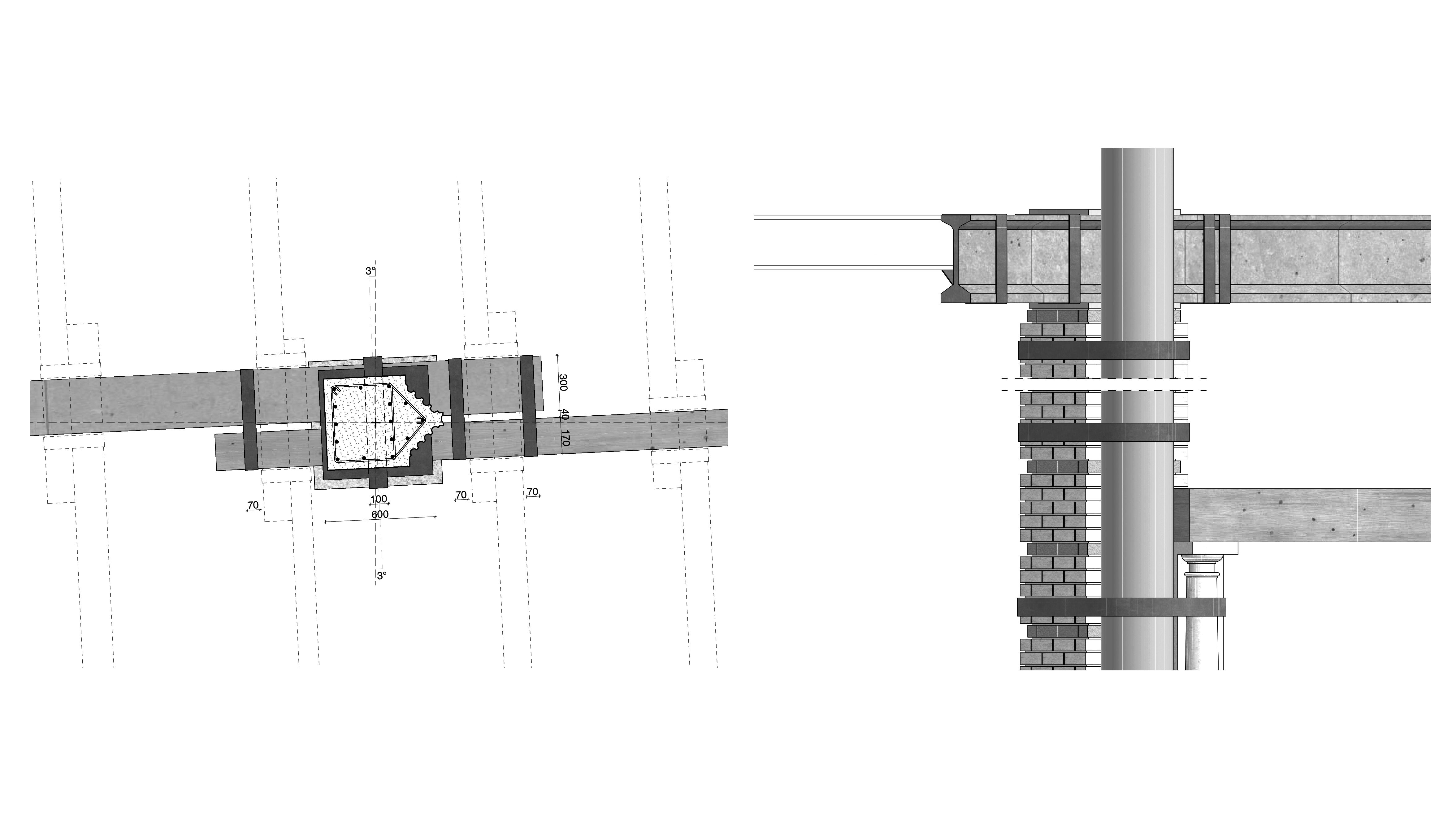ADS5: Joining, Binding & Completing – What Do You Mean?

About
ADS5 focused on literal building elements and their origins, carbon sequestering materials and how they can in the words of Gottfried Semper, “be joined, bound, and brought to completion”, a clear etymology of architecture “emblematic and defining its culture”.
Following on our first term research under the title “How to -veCO2 ?” and through investigation and experimentation, we learned where materials like stone and timber, can replace standard building elements which are often higher in embodied carbon. Students produced “carbon copies” of their studies demonstrating with the aid of sustainability and structural engineers how their chosen building could be both carbon negative and lower in cost. Pencil and material knowledge can empower architects to “take back control” of our role as ‘Design Team Leader’ to better ethical outcomes. Currently the role is in the hands of Quantity Surveyors, project managers who determine a project’s forward momentum by component costs. Yet, simply substituting one material for another can anticipate, or acknowledge, the knock-on consequences to embodied carbon, social interaction, or textural and poetic outcomes to the design.
Only the architect can be trained and skilled sufficiently to predict and control these variables. With that in mind, students have applied these principles to a variety of global contexts and conditions, working holistically from the global or regional scale of planning, political, and socio-economic conditions, down to the detailed expression of a new language of architecture. The studios results demonstrate cheaper, quicker, and far greener techniques to build. The “process before product” that Semper, Ruskin and Morris saw as fundamental to architecture. We have learned “how?”, which Richard Sennett believes is necessary while developing “why?”, and used our skills to ethical purposes.